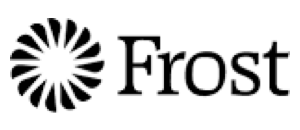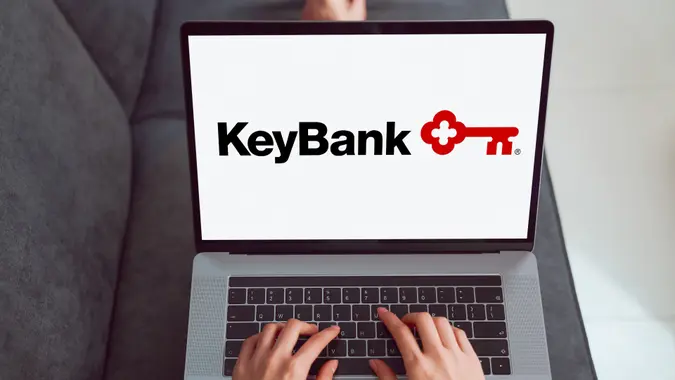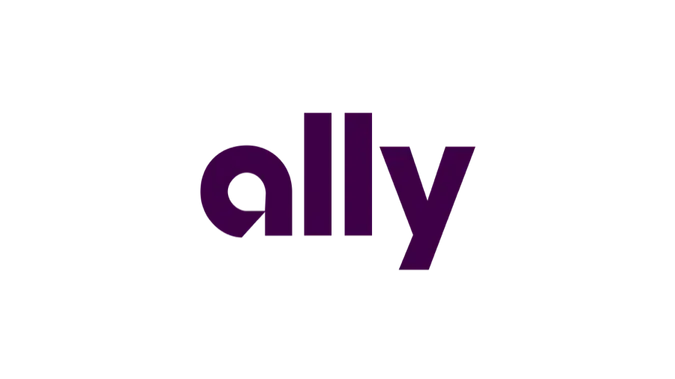Frost Bank Review: Full-Service Banking With a Personal Touch
Commitment to Our Readers
GOBankingRates' editorial team is committed to bringing you unbiased reviews and information. We use data-driven methodologies to evaluate financial products and services - our reviews and ratings are not influenced by advertisers. You can read more about our editorial guidelines and our products and services review methodology.

20 Years
Helping You Live Richer

Reviewed
by Experts

Trusted by
Millions of Readers
GOBankingRates Score
-
Checking Account
4.5
-
Savings Accounts
4.0
-
CD Accounts
4.5
-
Money Market Accounts
4.0
-
Banking Experience
4.8
Pros
- Multiple types of account choices
- Highly rated mobile app
- Large enough to compete on service
- Small enough to offer a personal touch
- Competitive CD interest rates
Cons
- Lack of service for those outside of the metro areas in Texas that it serves
- Low interest rates may not make interest-bearing checking accounts worthwhile
- Must visit branch to open some accounts
Frost Bank Overview
Frost Bank is a regional bank that has served the people of Texas since 1868. With 191 locations and 1,700 ATMs throughout the Lone Star State, this San Antonio-based, state-chartered bank serves customers in most of Texas’s larger metro areas. It offers a solid choice of checking and savings accounts, as well as loans, investing, insurance and wealth management to help customers manage and grow their money.
GOBankingRates has named Frost Bank as a finalist in its Best Southwest Regional Banks of 2024 rankings.
Frost Bank Review: Key Features
Frost Bank offers the usual lineup of checking and savings accounts, along with money market accounts and certificates of deposit. Here’s a more detailed look.
Frost Bank Checking Accounts
The Frost Personal Account is its standard checking account offering. It’s an interest-bearing account and you get next-day availability on most deposits with access to direct deposits up to two days early.
The account has no overdraft fee unless the overdraft is $100 or more, in which case Frost charges $35 for each, up to $105 per day. An $8 monthly service charge is waived when you receive at least $100 in direct deposits each month, maintain a $1,000 minimum daily balance or maintain combined average daily balances of $5,000 or more. The fee is automatically waived for account holders under age 25, who also can open an account with a minimum deposit of $25 vs. the bank’s standard $50 minimum.
If you would use out-of-network ATMs, take note: Frost charges a $2 fee.
Frost Bank Savings Accounts
Frost Bank has just one savings account, called, simply, the Frost Savings Account. The account pays annual percentage yield, which is more than the rates large banks pay and about double the national average rate of 0.46%. However, you’ll need $50 to open an account and might have fees to contend with.
Account holders age 25 or older incur a $3.50 monthly maintenance fee with the Frost Savings Account, but it’s easy to waive — just maintain at least a $300 balance, deposit at least $10 per month or own a Frost Plus Account or Frost Premium account.
A significant downside for some consumers is that free withdrawals are limited to two per month. You’ll pay $3 for each one after that.
Frost Bank CD Accounts
Frost certificates of deposit are available in three sets of terms based on the amount of money you want to open your account with. Ninety- and 180-day CDs earn the highest rates, which makes them an attractive option for anyone who’s leery about tying up their money for too long.
You must deposit at least $1,000 to open a Frost CD. A one year CD in the lower balance range earns APY. In all ranges, rates are highly competitive with those of major banks like Bank of America and Chase.
Money Market Accounts
If you maintain high savings balances and have limited check-writing needs, you can earn more interest with a Frost money market account than with separate checking and savings accounts. Another benefit is the ability to withdraw money six times per month, including with checks.
Rates are tiered based on your balance and they tend to be quite competitive. The $15 monthly fee is waived with a $15,000 minimum daily balance in the MMA or ownership of a Frost Premium Account. You can open a money market with a minimum deposit of $50.
Banking Experience
Frost Bank operates branches in several metro areas across Texas. However, Frost offers customers a variety of options for both customer service and account access.
If you prefer to visit a branch with questions, most branches are open Monday-Friday from 8 a.m. or 9 a.m. to 5 p.m. or 6 p.m. CST and Saturday from 9 a.m. to 1 p.m. CST, although some are closed on Saturdays. If you’d like, you can call ahead for an appointment.
Customer Service
Customer service and internet banking specialists are available 24/7 throughout the year. The general customer service number is 800-513-7678. For a Spanish-speaking banker, call 210-220-4511.
Another option is to chat with a live agent. You must be logged into online banking or the mobile app to use this feature.
Technology
Frost customers can handle almost all banking functions on their computers or through the Frost App, which is available on the App Store and Google Play, where they’re rated 4.9 out of five stars and 4.8 out of five stars, respectively.
The app gives you access to all your Frost finances, including mortgages, credit cards and IRAs. You can use it to open an account, connect your Frost accounts to accounts at other financial institutions, send or receive money, deposit checks and contact customer service.
Comparable Banking Options
Banking is a competitive business, and inevitably, banks will stand out in specific areas. These are some of the best benefits offered by Frost and two of its peers.
Frost vs. Bank of America
Bank of America, Member FDIC, offers the world’s largest wealth management business through Merrill Lynch. However, Frost’s personal touch could amount to a competitive advantage when serving Texans.
Frost vs. Chase
Chase allows customers to open bank accounts without an initial deposit, which is a convenience Frost doesn’t offer on all its accounts. Nonetheless, opening an account with Frost will probably equal less in fees over time.
Final Take
Frost is a good option for those who live in its immediate service area because the bank offers a wide variety of products and services, some of which you must visit a branch location to access. As one of the Best Southwest Regional Banks of 2024, it has the resources to compete with larger institutions regarding technology while remaining small enough to offer the kind of personal touch found at a community bank.
But because Frost is exclusively a Texas bank, it’s not a good choice for those who live and work outside of its service area — or even for Texans who don’t live near a Frost branch or ATM. Customers looking for a bank with a wider geographic reach are likely better off elsewhere.
Compare to Other Banks
- Bank of America Review
- Chase Bank Review
- Wells Fargo Bank Review
- PNC Bank Review
- Capital One Bank Review
Frost Bank FAQ
Now that you know more about Frost Bank's products and services, here are answers to some of the bank's frequently asked questions.- Is Frost a real bank?
- Yes. In addition to being a finalist in GOBankingRates' Best Southwest Regional Banks of 2024 rankings, it has earned customer satisfaction honors from J.D. Power 14 years in a row.
- Is Frost Bank owned by Chase?
- No. Frost Bank is owned by a holding company called Cullen/Frost Bankers.
- Does Frost operate only within Texas?
- Yes. Frost's 171 bank branches and 1,700+ ATMs are within the state of Texas.
- What financial technology applications does Frost Bank offer?
- Frost offers its own app as well as online banking, biometric security and digital wallet compatibility. These applications, plus the availability of Zelle to send and receive money, help the bank keep up with the latest financial technology.
- What makes Frost different?
- Frost Bank's breadth of products and services make it a standout among small regional banks.
- Is Frost Bank better than Wells Fargo?
- They're very different banks, and both are good. Customers who live near a Frost Bank branch may well consider Frost to be the better choice for their needs.
- Where does Frost Bank rank?
- Frost Bank ranks second among GOBankingRates' Best Southwest Regional Banks of 2024.
- Is my money safe at Frost Bank?
- Yes. Deposits are FDIC-insured up to $250,000.
- Does Frost Bank offer free money for signing up for an account?
- Frost Bank is not offering any new account promotions at this time, but it does have many other features that may make it worth your while if you live in Texas.
Daria Uhlig contributed to the reporting for this article.
Rates are subject to change; unless otherwise noted, rates are updated periodically. All other information on accounts is accurate as of Jan. 3, 2024.
Editorial Note: This content is not provided by any entity covered in this article. Any opinions, analyses, reviews, ratings or recommendations expressed in this article are those of the author alone and have not been reviewed, approved or otherwise endorsed by any entity named in this article.
To discover the Best Regional Banks, GOBankingRates looked at the top regional institutions (excluding online banks and neobanks) located in under 25 states. To determine rankings, GOBankingRates looked at the following factors: (1) total assets as sourced from the FDIC; (2) checking product minimum deposit; (3) monthly checking fee ratio (percentage based on the minimum to avoid the fee compared to the monthly fee itself); (4) savings product minimum deposit; (5) savings product APY; (6) Bauer rating (out of 5 stars); (7) products/services offered (auto loans, mortgage loans, credit cards, investment services and insurance); and (8) the average mobile app rating between the Google Play (Android) and Apple app stores. All factors were then scored and combined, with the lowest score being the best. Factors (1), (2) and (4) were weighted 0.5 times; factor (5) was weighted 2.5 times; and factor (7) was weighted 1.5 times.
For regional breakdowns, the same methodology as above was used. The regions were broken down into the following: West (AK, CA, CO, HI, ID, MT, NV, OR, UT, WA, WY); Southwest (AZ, NM, OK, TX); Midwest (IA, IL, IN, KS, MI, MN, MO, ND, NE, OH, SD, WI); Southeast (AL, AR, DC, FL, GA, LA, KY, MS, NC, SC, TN, VA, WV); and Northeast (CT, DE, MA, MD, ME, NH, NJ, NY, PA, RI, VT). To be considered for a region, a bank had to have a branch in one of the states listed and be headquartered in that state/region.
Our in-house research team and on-site financial experts work together to create content that’s accurate, impartial, and up to date. We fact-check every single statistic, quote and fact using trusted primary resources to make sure the information we provide is correct. You can learn more about GOBankingRates’ processes and standards in our editorial policy.
- FDIC. 2023. "National Rates and Rate Caps."

 Written by
Written by  Edited by
Edited by 






























